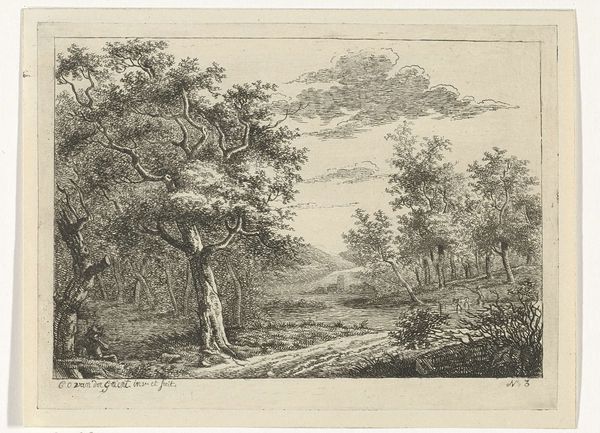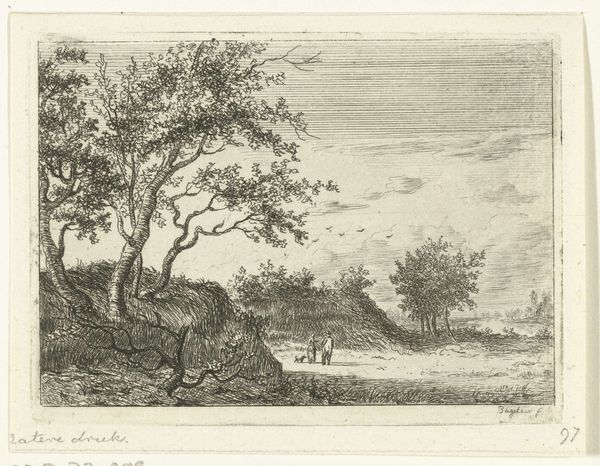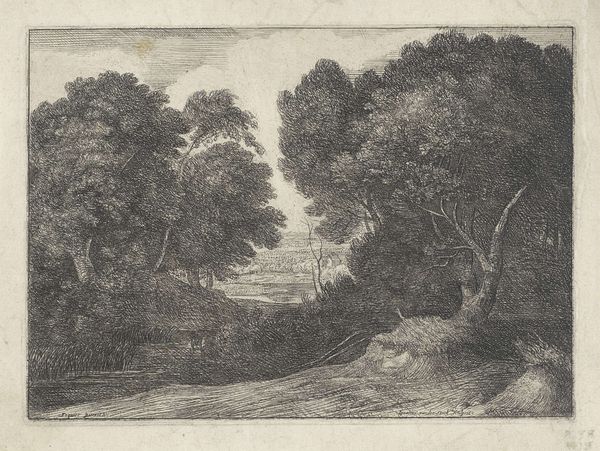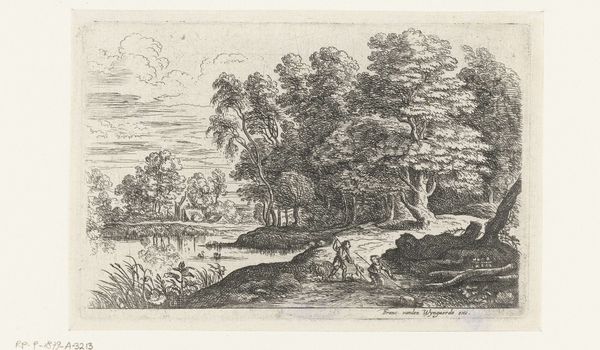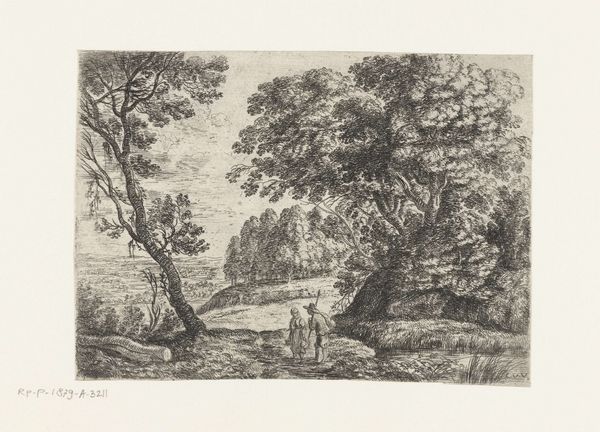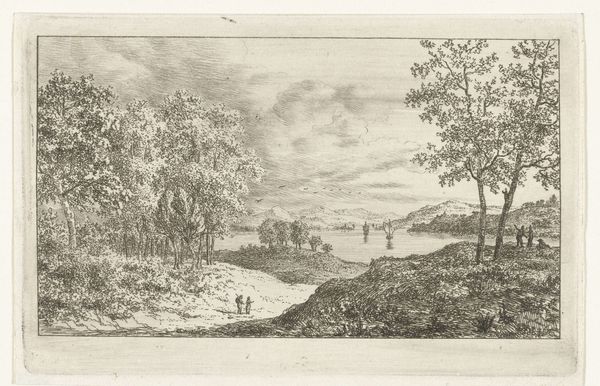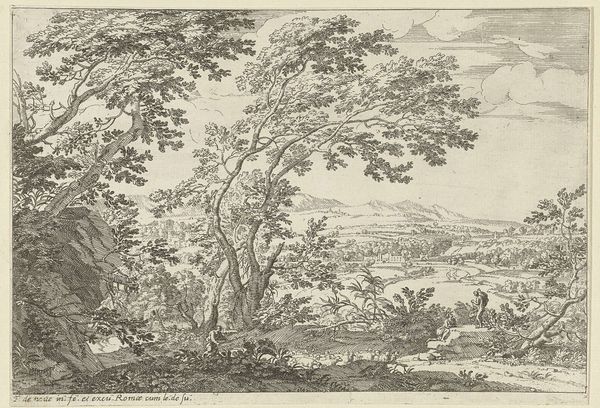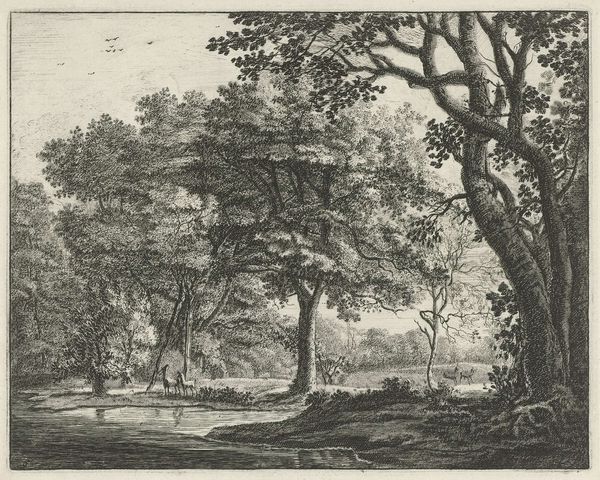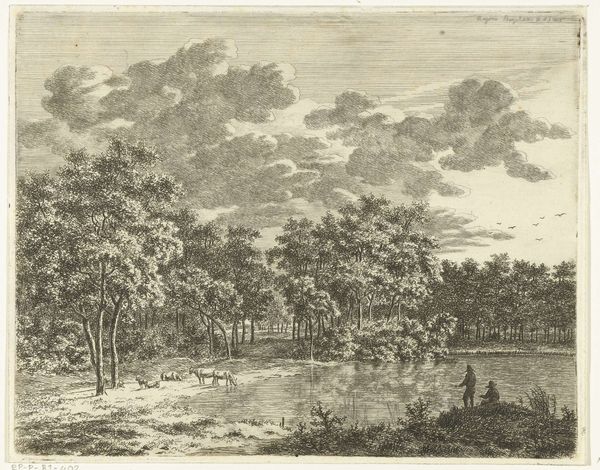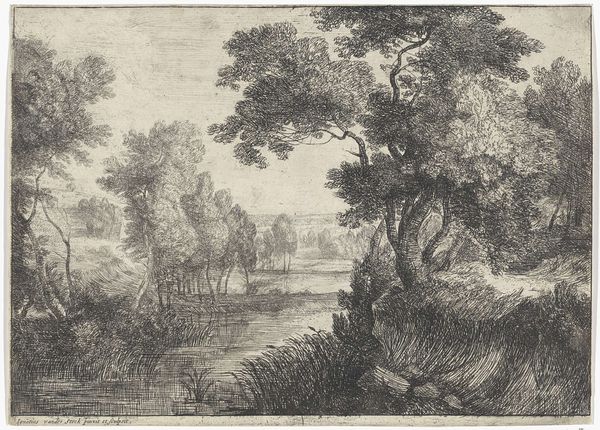
print, etching
# print
#
etching
#
landscape
#
etching
#
romanticism
#
realism
Dimensions: height 115 mm, width 155 mm
Copyright: Rijks Museum: Open Domain
Curator: Cornelis Ouboter van der Griendt’s “Landschap met vee,” created between 1807 and 1868, is an evocative landscape etching held at the Rijksmuseum. Editor: It’s immediately striking how... pastoral it is. There's this gentle, almost melancholic quietness, even with the livestock and the figure present. It’s as though nature itself is the main character. Curator: Indeed. The image uses the established symbolism of romantic landscape paintings; the mountains signify the sublime, and the livestock speaks of rural peace, hinting at a return to simpler times, or even to a prelapsarian world. It’s steeped in an idealized relationship with the environment. Editor: I find myself questioning that ideal. While visually calming, aren’t these kinds of images a form of selective memory? Glossing over the hard labour and realities of rural life, reinforcing certain power structures, and sanitizing the human-animal relationships. Curator: An interesting take. But what also resonates for me is how van der Griendt balances detail and simplification. Notice the meticulous textures of the leaves, balanced by the simple shading used to give dimension to the faraway mountains, the work evokes similar sentiments found in contemporary landscape paintings, suggesting both visual familiarity and the psychological concept of idealisation through collective memory. Editor: I can agree there is intentional framing happening, right? The framing achieved through the dense arrangement of trees pushes the viewer to recognize the image as curated nature. The whole etching presents a constructed perspective and the work almost asks to look more into what is not so directly present. Curator: It prompts consideration of what a Romantic artwork might be concealing under the guise of bucolic idealism. Editor: Absolutely. It speaks volumes about not only what is presented, but what isn’t—inviting the viewer to critically engage with the romanticization of pastoral scenes and the cultural amnesia that they encourage. Curator: Thank you. These observations help illuminate both the artwork's intended meanings and some deeper socio-political reflections.
Comments
No comments
Be the first to comment and join the conversation on the ultimate creative platform.


